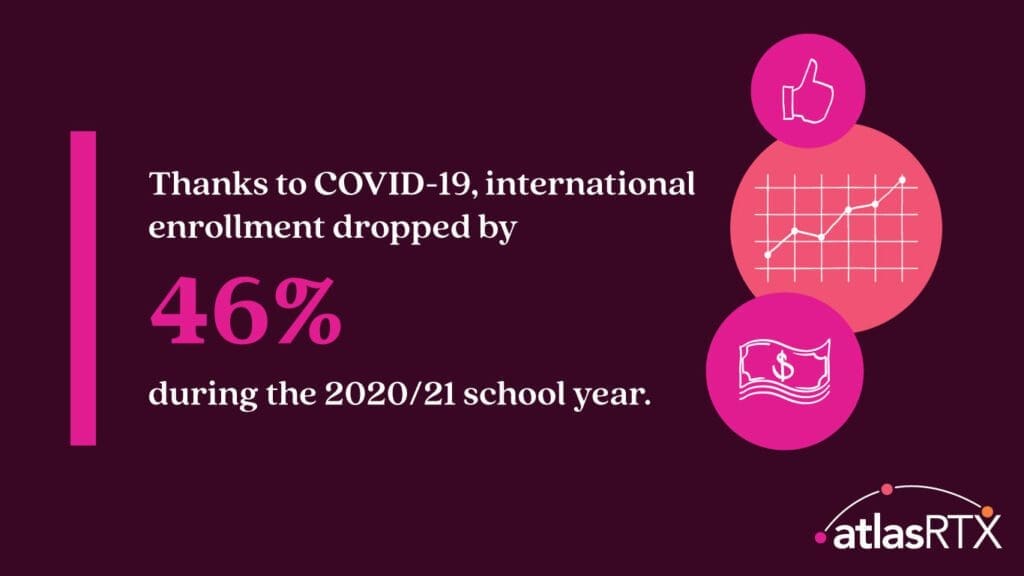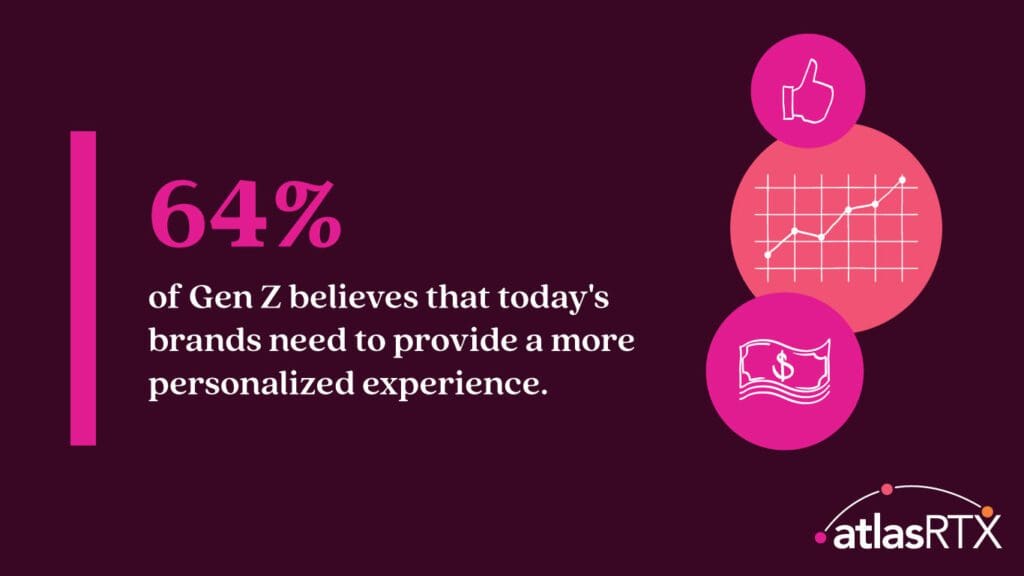For more than a decade, international student recruitment and enrollment have been an important part of both public and private higher education strategy in the United States. The ability to attract a diverse audience of students from around the globe and at home has long played a core part in reaching and maintaining healthy enrollment goals.
Much of that changed in the past few years, throwing many institutions into crisis. Thanks to the COVID-19 pandemic, international enrollment dropped by almost half during the 2020/21 school year. Those numbers are now rebounding. However, international perceptions of the U.S. combined with ongoing pandemic concerns mean that it might be years before we see them reach the levels of the mid-2010s once again.
In addition, Gen Z students currently in high school and college represent the most diverse generation in the history of the U.S. Only 52 percent of members in this cohort are considered of non-Hispanic whites. Even without considering the international population, a higher education strategy with a focus on racial and geographical diversity will play a crucial role in enrollment success over the next few years.
All of these trends bring up an important issue for higher education institutions of all types. How can you reach this diverse, digital-first audience that increasingly speaks languages other than English? Let’s dive into some potential strategic adjustments that could provide the answer.

Connecting Authentically With Multilingual Audiences
Many international students don’t speak English, or has only learned English in school. But the increasingly diverse U.S. population has seen similar trends. In fact, a record 67 million U.S. residents now speak a language other than English at home. That number has tripled since 1980.
Gen Z, of course, still speaks English. The number of non-English speaking teenagers from immigrant families in the U.S. has actually decreased from 22 percent in 2003 to 13 percent. But the way they speak and learn the language is different than any generation before them. Digital media influences much of their proficiencies.
In that environment, simply communicating with prospective students – both domestic and international – on their level has become an unexpected challenge for U.S. higher ed institutions. Larger non-English speaking international populations, combined with new forms of language that admissions and student services staff are simply not accustomed to, can make communication difficult.
Connecting with these global audiences means adapting your communication strategy. Language translation capabilities become key to attracting a diverse audience. But even a general shift in the type of language used has to be a major consideration to successfully communicate with this new cohort of prospective students.
Leveraging Digital, In-the-Moment Means of Communication
Gen Z, both in the United States and abroad, is undoubtedly the digital-first generation. They increasingly use their smartphone for all communication and specifically for SMS texting. In fact, 73 percent of Gen Z respondents in one survey used their internet-connected devices for text and chat. This method outpaced every other potential use of smartphones.
At least partially due to the nature of those communications, this generation expects instant responses. That’s especially problematic for international students. Due to time differences, they who will not easily be able to adhere to the traditional office hour schedule of universities. The 24×7 mindset of this generational cohort cannot match the work week we’ve become so used to in student-facing offices like admissions, financial aid, and career services.
To remain successful in this digital-first, in-the-moment communication environment, institutions have to make major adjustments across the board. Communication channels need to remain open even during off-hours. This is problematic given the current staffing and turnover crisis in higher education.
Finding new means of communication, as a result, becomes absolutely vital. Innovative solutions have to be found in order to ensure that this more global, digital audience can still get the answers they need. It’s a must in order to happily enroll (and keep them enrolled) at your college or university.
Adjusting University Processes and Technologies to Meet Evolving Student Needs
The final adjustment is a technological one. Adapting to a more diverse audience can be immensely challenging in the slow-moving higher education industry. This is especially true considering the various institutional challenges caused by COVID-19 and other external factors the past two years. Working smarter instead of harder may be a well-worn cliche, but it applies specifically in this case.
Take your institution’s website as an example. According to IBM, 62 percent of Gen Z-ers will simply refuse to use an app or website that is too slow to load. That doesn’t mean you should spend a large portion of your budget on a fancy new website. It simply raises the importance of adjusting your website. Aim for faster loading times through a better host, fewer pages, and less code bloat.
Similarly, 64 percent of Gen Z believes that today’s brands need to provide a more personalized experience. Invest in technology that can deliver this type of personalization without an extensive resource investment. This approach can become a core part of building a better digital experience for students to embrace and be drawn toward.

Digital Assistants Help Higher Education Adapt
Digital assistants have a major role to play in these types of shifts. Reaching a digital-first audience that increasingly speaks non-English languages, has a shorter attention span, and expects immediate engagement is difficult. Higher education must work with technology specifically designed to address these challenges.
Most universities cannot afford a large-multilingual team fluent in every potential language, working both day and nights. They can, however, adapt their communications strategies to include tools that include options like language translation, automated responses regardless of the time, and more.
Getting there is a difficult step. Moving away from the status quo always is. But in the future, audiences will only continue to become more diverse, more globally distributed, and more removed from the traditional models that many institutions build their strategies around.
Strategic adjustments take time. But they are vital to ensure that your college or university can successfully recruit and retain high-quality students and provide an experience that will be worth their investment. To reap the rewards in future student success efforts, the time to get started is now. Talk to the team at AtlasRTX about how to develop your institution’s communication strategy to successfully reach a diverse audience.